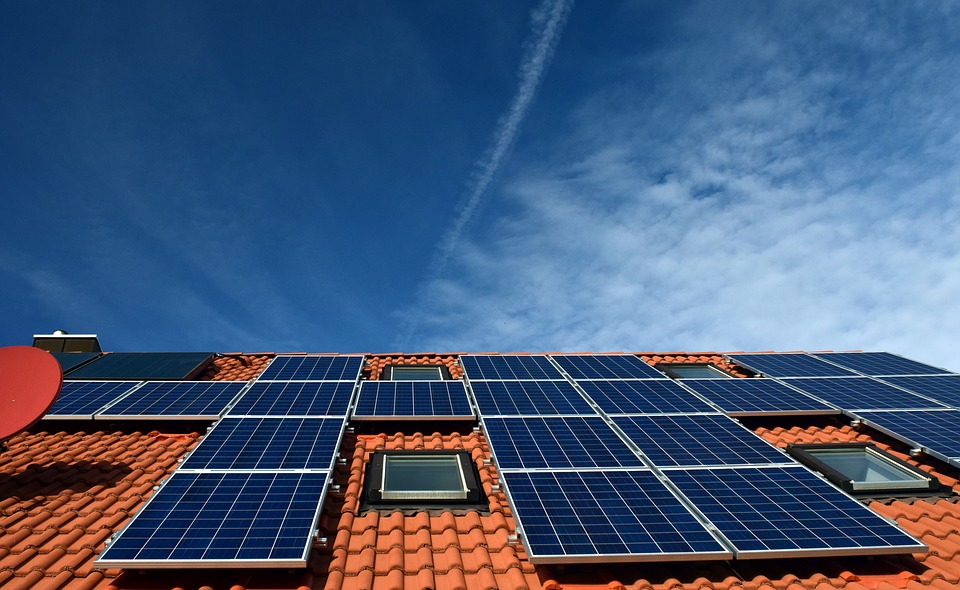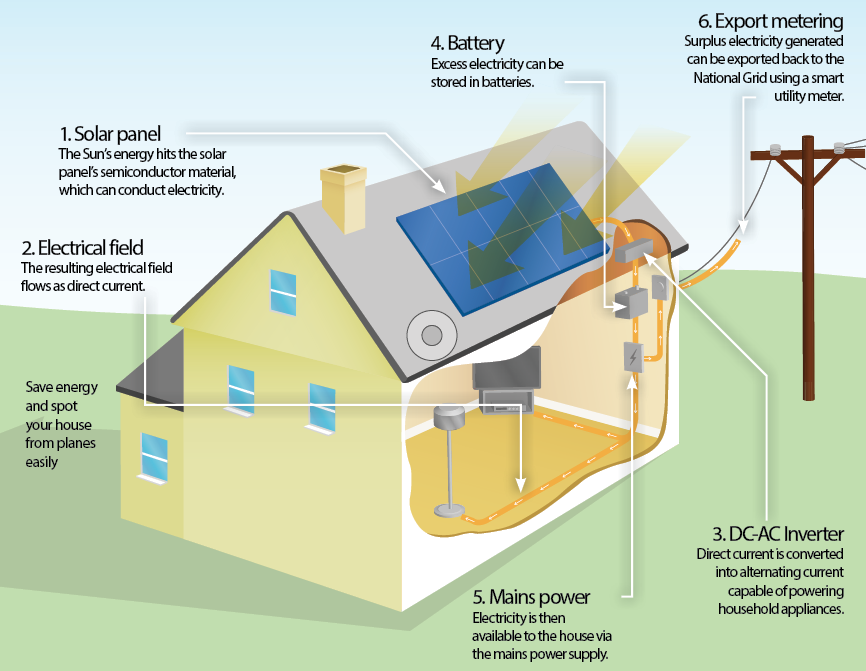How do solar panels work?

How sunlight is transformed into electrical energy?
Solar panels – also known as photovoltaic (PV) cells – convert the Sun’s energy into electricity, which is a great alternative to costly, less environmentally friendly methods of powering your home. PV cells consist of two layers of a semiconductor material, such as silicon, and when sunlight shines on the cell it creates an electrical field between the layers. This amazing conversion of sunlight into electricity takes place because when the Sun’s energy hits a cell, some of it is absorbed – and transferred – into the semiconductor material. The energy loosens the electrons in the material, which, due to the electric fields, flow as electrical current. An inverter then converts this direct current into alternating current so it can be used in the home. To be able to store all this lovely solar energy for a rainy day would require batteries, which are pretty expensive to buy and maintain. So one solution is to hook up with the National Grid and buy power from there when you need it but sell it back when you’re producing more than you can use.

This article was originally published in How It Works issue 4, written by Helen Laidlaw
For more science and technology articles, pick up the latest copy of How It Works from all good retailers or from our website now. If you have a tablet or smartphone, you can also download the digital version onto your iOS or Android device. To make sure you never miss an issue of How It Works magazine, subscribe today!




